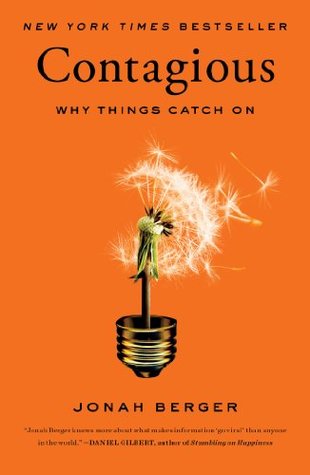More on this book
Community
Kindle Notes & Highlights
The concept was simple. Barclay Prime was going to deliver the best steakhouse experience imaginable.
Like most small businesses, restaurants also have a huge awareness problem.
And unlike the large hotel chains Wein had previously worked for, most restaurants don’t have the resources to spend on lots of advertising or marketing. They depend on people talking about them to be successful.
Wein didn’t create just another cheesesteak, he created a conversation piece.
It worked. The story of the hundred-dollar cheesesteak was contagious.
They start with a small set of individuals or organizations and spread, often from person to person, almost like a virus.
One reason some products and ideas become popular is that they are just plain better.
So when something comes along that offers better functionality or does a better job, people tend to switch to it.
Another reason products catch on is attractive pricing.
Social influence and word of mouth. People love to share stories, news, and information with those around them.
But word of mouth is not just frequent, it’s also important.
A word-of-mouth conversation by a new customer leads to an almost $200 increase in restaurant sales.
Word of mouth is more effective than traditional advertising for two key reasons. First, it’s more persuasive.
Our friends, however, tend to tell it to us straight.
Second, word of mouth is more targeted.
Word of mouth, on the other hand, is naturally directed toward an interested audience.
Word of mouth tends to reach people who are actually interested in the thing being discussed.
They sent a note explaining why they thought the book would be good for my students, but they also mentioned that they sent a second copy so that I could pass it along to a colleague who might be interested.
Help me out with a quick pop quiz. What percent of word of mouth do you think happens online? In other words, what percent of chatter happens over social media, blogs, e-mail, and chat rooms?
Research by the Keller Fay Group finds that only 7 percent of word of mouth happens online.
People are inundated with online content,
Online conversations could reach a much larger audience, but given that offline conversations may be more in-depth, it’s unclear that social media is the better way to go.
The second issue is that Facebook and Twitter are technologies, not strategies. Word-of-mouth marketing is effective only if people actually talk.
The psychology of sharing. The science of social transmission.
Contagious content is like that—so inherently viral that it spreads regardless of who is doing the talking. Regardless of whether the messengers are really persuasive or not and regardless of whether they have ten friends or ten thousand.
To fully understand what causes people to share things, you have to look at both successes and failures. And whether, more often than not, certain characteristics are linked to success.
George posted the videos on YouTube and crossed his fingers.
The Blendtec story demonstrates one of the key takeaways of contagious content. Virality isn’t born, it’s made.
But I realized that rather than just abstractly musing about why people did things, I could apply the scientific method to find out the answers.
By “contagious,” I mean likely to spread. To diffuse from person to person via word of mouth and social influence. To be talked about, shared, or imitated by consumers, coworkers, and constituents.
How does it make people look to talk about a product or idea? Most people would rather look smart than dumb, rich than poor, and cool
than geeky.
How do we remind people to talk about our products and ideas? Triggers are stimuli that prompt people to think about related things.
When we care, we share.
Emotional things often get shared. So rather than harping on function, we need to focus on feelings.
It also tells us that it’s hard to copy something you can’t see. Making things more observable makes them easier to imitate, which makes them more likely to become popular. So we need to make our products and ideas more public.
We need to design products and initiatives that advertise themselves and create behavioral residue that sticks around even after people have bought the product or espoused the idea.
People like to help others, so if we can show them how our products or ideas will save time, improve health, or save money, they’ll spread the word.
We need to highlight the incredible value of what we offer—monetarily and otherwise.
These are the six principles of contagiousness: products or ideas that contain Social Currency and are Triggered, Emotional, Public,
Practically Valuable, and wrapped into Stories.
People talked about the hundred-dollar cheesesteak at Barclay Prime because it gave them Social Currency,
wrapped in a Story.
Talking and sharing are some of our most fundamental behaviors. These actions connect us, shape us, and make us human.
the likelihood that one person generates an extremely long chain may be small.
So when I say that doing X will make an idea more viral, for example, I mean that it will be more likely to spread from one person to another, regardless of whether it eventually generates a long chain or “infects” an entire population.
“The most powerful marketing is personal recommendation,” he said. “Nothing is more viral or infectious than one of your friends going to a place and giving it his full recommendation.”
In case it’s not already clear, here’s a little secret about secrets: they tend not to stay secret very long.


